9 Of The Unhealthiest Store-Bought Flavored Sparkling Waters
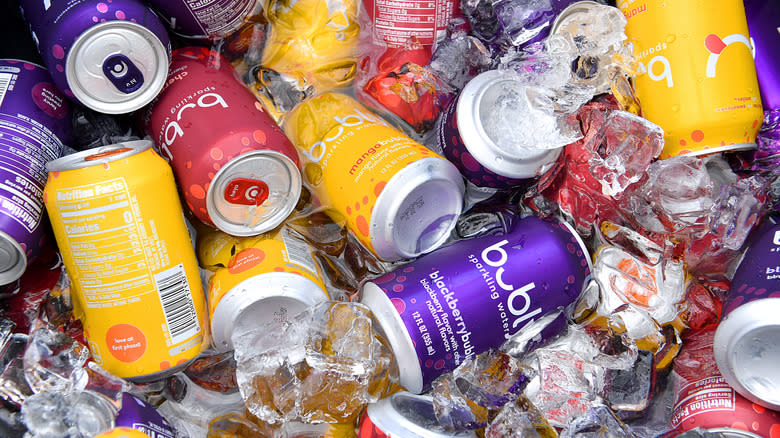
Are you looking for a healthy alternative to sodas? Flavored sparkling water might seem like the answer. You get all the bubbles and a burst of flavor with little to no calories. But before you reach for any old brand, you should know that not all flavored sparkling waters are healthy.
It's strange to think of water as unhealthy, but indeed, we discovered many sparkling water brands that use less-than-ideal ingredients. Some come with questionable chemicals like preservatives, artificial dyes, and sweeteners. The latter ingredient can cause all kinds of issues. Don't think you're safe with brands that have only two ingredients, carbonated water and natural flavors, either. Many contain PFAS, aka "forever chemicals," which linger in your body and can cause nasty side effects.
This information isn't always easy to find. But not to worry: We've researched reports and scientific studies to determine the unhealthiest flavored sparkling water brands on the market. If you consider yourself a health-conscious consumer with a penchant for bubbly water, read on to learn which brands to avoid.
Read more: The 14 Best Sugar-Free Sodas Ranked
Topo Chico
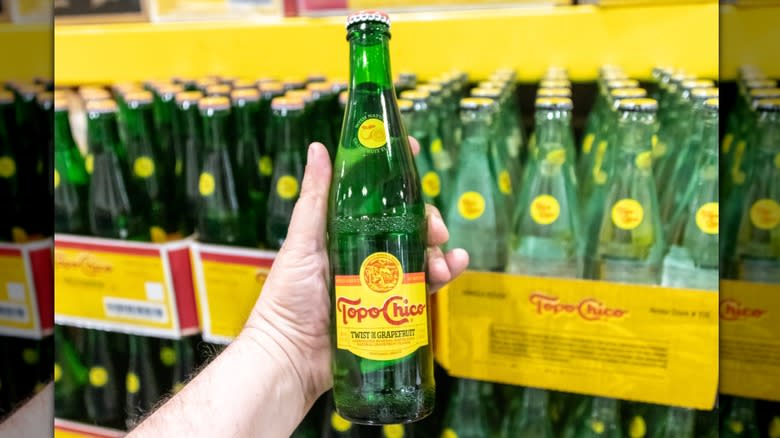
Topo Chico gives off old-school vibes with its classic glass bottles and crown caps. The brand's sparkling water comes with a twist of lime or grapefruit and contains just carbonated water and natural flavors. Topo Chico also offers 12 ounce cans in refreshing flavors like lime with mint and tangerine with ginger, which are made with real fruit juice. Both these options sound healthy enough, but a Consumer Reports study showed that this brand contained high levels of PFAS -- harmful chemicals that can't be seen or tasted.
We've all heard that PFAS are bad, but we might not understand why. PFAS, or per- and polyfluoroalkyl substances, are also known as "forever chemicals," because they last for thousands of years. Once they enter our bloodstream, they're nearly impossible to get rid of, and they've been linked to everything from pregnancy complications to hormone issues to increased cancer risk. To protect consumers, the EPA set a maximum limit of 4.0 parts per trillion (ppt) for certain PFAS in drinking water. However, according to the Consumer Reports study, Topo Chico's PFA levels rang in at 9.76 ppt, far higher than this limit and that of any other brand tested.
In response to the report, Topo Chico said it would strive to improve. However, we're not sure when or if changes will be made and what they might look like. For now, we'd steer clear of Topo Chico if you're avoiding PFAS.
Sparkling Ice
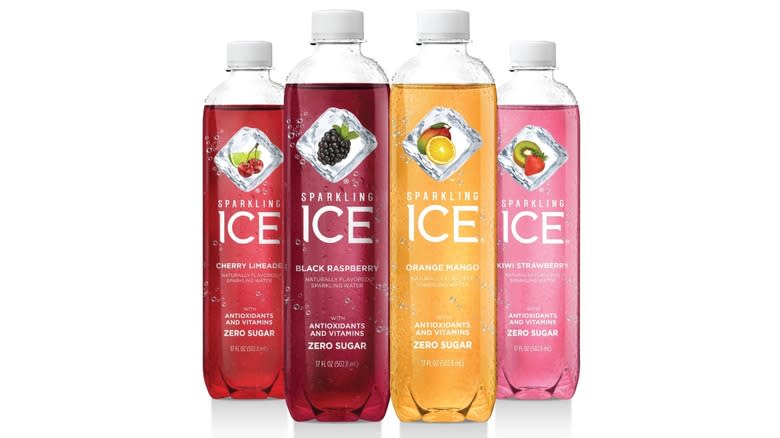
Sparkling Ice leads the pack when it comes to carbonated water sales, making over $840 million in 2023 alone, per Statista. We're not surprised the brand is doing so well, seeing how they have so many options to choose from. The company carries an array of fun flavors, like kiwi strawberry and coconut pineapple, as well as traditional varieties like lemon lime. And, if you want a little kick with your water, there's the brand's +Caffeine line, which comes with 70 grams of natural caffeine, or +Energy, which has caffeine, electrolytes, and vitamins all in one. Unfortunately, just because it's popular doesn't make it healthy; all the options we just listed are sweetened with sucralose.
Sucralose is a zero-calorie sweetener that's thought to be healthier than aspartame -- which is a pretty low bar to begin with. Even if this claim is true, it doesn't mean sucralose is technically healthy. In fact, an Advances in Nutrition review determined that sucralose caused several negative health effects, including inflammation, increased fasting glucose, and decreased insulin sensitivity. Over time, this combination can wreak havoc on blood sugar regulation. The review also showed that sucralose heightened the reward systems in the brain. We all love that feel-good sensation when reward centers are activated, but without some self-control, it might lead us to want more and more of this artificially sweetened beverage.
PurAqua Sparkling Frost
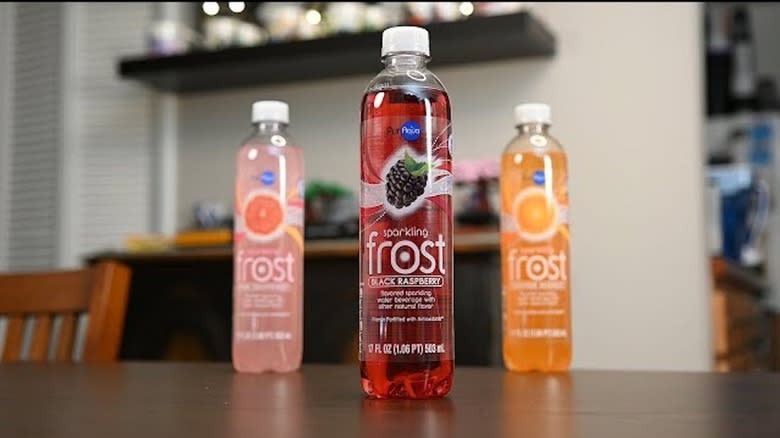
Aldi's PurAqua has three Sparkling Frost waters on its website: pink grapefruit, orange mango, and black raspberry. Despite carrying fewer varieties, PurAqua bears many similarities to Sparkling Ice, including an ingredient list containing preservatives and sucralose.
One of the preservatives in PurAqua's sparkling waters is sodium hexametaphosphate (SHMP), which extends the beverage's shelf life and gives it a crystal-clear appearance. But using additives usually comes with a catch and SHMP is no exception. A study published in ACS Omega showed that SHMP can change the structure of digestive enzymes and proteins in the gut and ultimately cause digestive and cardiovascular issues. This is not to be taken lightly -- as they say, health begins in the gut. If you're an Aldi shopper and want to stock your cart with a healthier option, go for the store's Belle Vie sparkling water instead. These drinks are free of artificial ingredients and come in lemon lime, grapefruit, and berry.
Great Value Sparkling Water
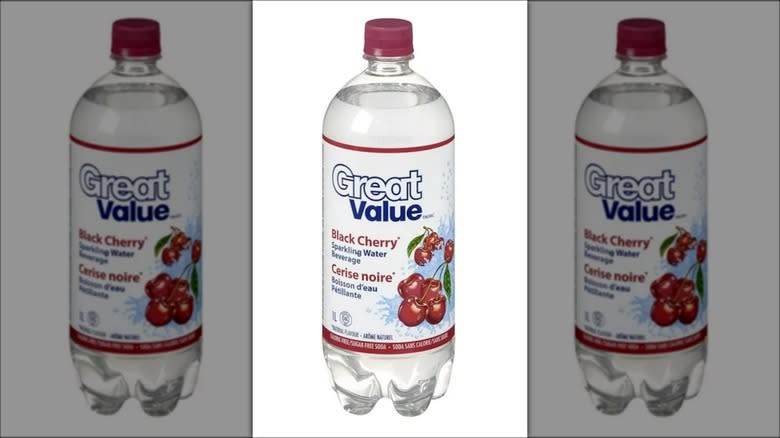
Walmart's Great Value brand sells many unhealthy items, from pastries to pepperoni pizza to, yes, sparkling water. The company tends to cut corners by using artificial ingredients that are hyper-palatable, meaning they'll probably have you coming back for more -- and Great Value's Black Cherry sparkling water beverage is a prime example of this. It contains both aspartame and acesulfame-K, two artificial sweeteners known to have negative side effects.
When many people reach for flavored sparkling water, they're likely aiming for something flavorful without the added calories. Perhaps they're trying to avoid weight gain or protect their gut health. If this is the case, artificial sweeteners aren't the best bet. In a PLoS ONE study, acesulfame-K disrupted the gut microbiome and led to weight gain in mice. Mind you, we need more studies on humans to understand the full effects of this artificial sweetener, but based on this research, it's worth being wary.
Clear American Sparkling Water
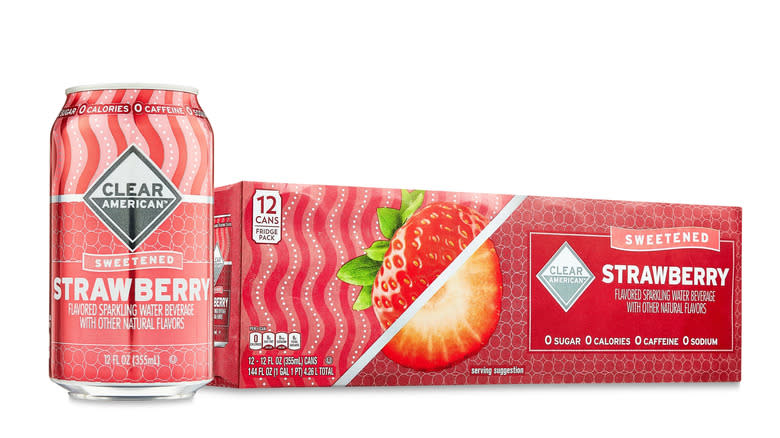
Clear American is a low-cost brand offering flavored sparkling water in key lime, Fuji apple, mandarin orange, and peach, among other flavors. Although the water may be transparent, the ingredient list is anything but. These drinks contain a preservative and two different artificial sweeteners, aspartame and acesulfame-K. We've already discussed the dangers of acesulfame-K, but aspartame poses some real health risks as well.
According to the World Health Organization, the International Agency for Research on Cancer classifies aspartame as a "possible carcinogenic." This means there is limited evidence that it could lead to cancer, but scientists can't say definitively either way. This shred of doubt has some people hopeful that they can consume aspartame-sweetened products without any side effects. However, as Mayo Clinic physician Dr. Donald Hensrud explains, "First of all, the level of risk is low, but consuming something over many years, even in a low amount, may possibly add to the risk."
Cancer risk aside, a Canadian Medical Association Journal review linked nonnutritive sweetener consumption to an increased risk of obesity and cardiovascular issues. Since this beverage has two different types of artificial sweeteners, it's a double whammy in this department. Remember, just because it doesn't have calories doesn't make it a healthy choice.
Kirkland Signature Sparkling Water
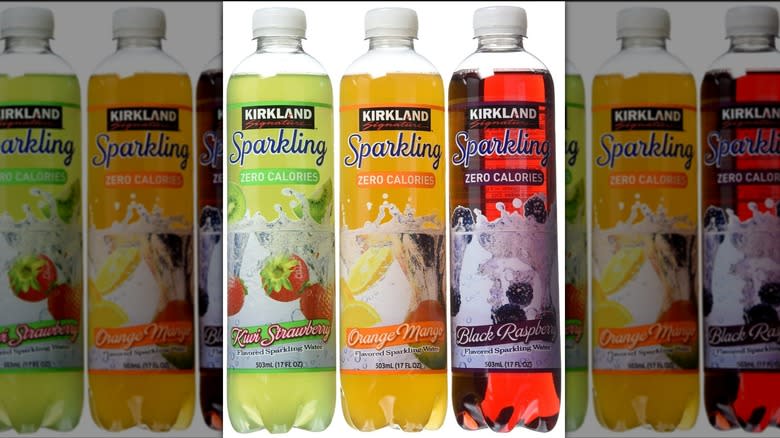
Kirkland Signature makes some nutritious products, but we wouldn't consider its sparkling water one of them. These 17 ounce bottles come in kiwi strawberry, orange mango, and black raspberry, all of which contain preservatives, sucralose, and artificial dyes.
It immediately raised some flags that Kirkland's Signature sparkling water bottles contain Red 40, Blue 1, Yellow 6, and Yellow 5. Food dyes are known to have adverse health effects; an Environmental Health study showed a link between kids who consumed food dyes and negative behaviors, such as hyperactivity. The report noted that tolerance varied among children, and we'd expect the same for adults. But although we might not react as strongly as children, it's likely to have an impact on our mood and behaviors as well.
If you're a fan of both Costco and flavored sparkling water, fear not: You don't have to give up all Kirkland's sparkling waters. Luckily, the brand also sells massive sparkling water variety packs without the added chemicals. Each 35 count pack comes with 12 ounce cans of lemon, lime, and grapefruit bubble water. The big difference here (besides serving size) is that the only ingredients listed include carbonated water and natural flavors.
Polar Seltzer
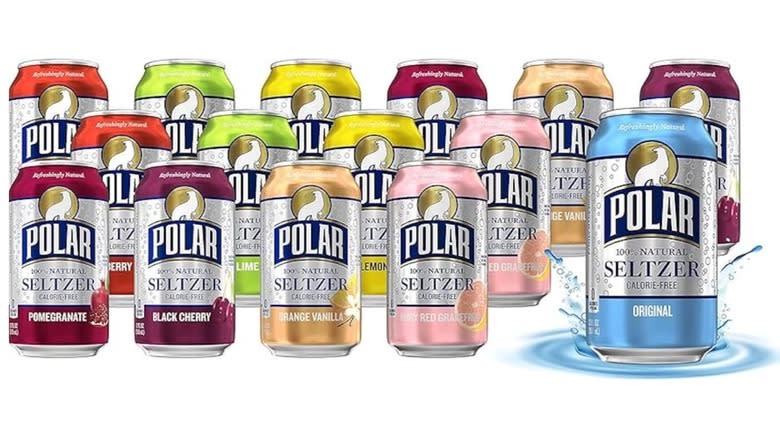
Polar Seltzer is known for offering a variety of flavors. The brand's toasted coconut and pineapple pomelo seltzers will have you dreaming of tropical vacations, while the ginger lime mule and vanilla make excellent calorie-free cocktail mixers. Meanwhile, the brand's Expedition: Flavor line carries adventurous options like Apple Pom Bomb and Clementine Bramble. And if you prefer petite portions, the Polar Seltzer Jr line consists of 7.5-ounce colorful cans with unique flavors like Unicorn Kisses and Mermaid Songs. Whether full-sized or mini, these seltzers contain solely carbonated water and natural flavors. However, according to the Consumer Reports study, Polar Seltzer water tested with the second-highest levels of PFAS at 6.41 ppt.
PFAS are potentially harmful chemicals linked to various health issues. While Polar representatives questioned Consumer Reports' testing methods and defended their product, they have not released their own PFAS testing methods and numbers, making it difficult to trust their rebuttal. You can always proceed at your own caution, but we'd hold out for solid evidence before putting our health at risk.
Polar FROST Sparkling Water
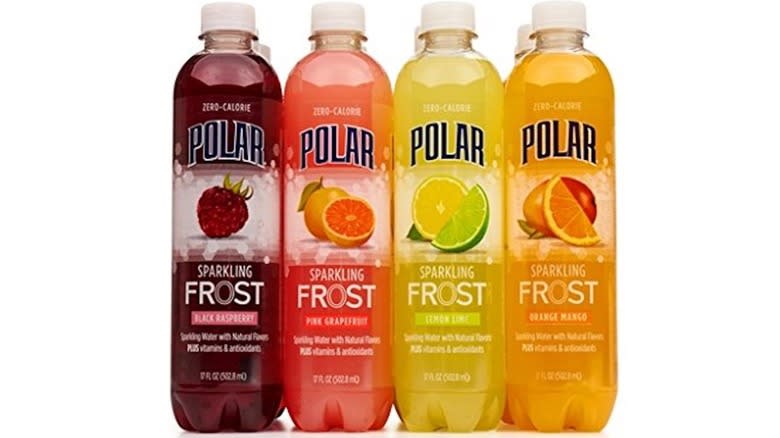
Aside from its popular seltzers, Polar Beverages also makes FROST Sparkling Water. We couldn't lump this product in with the brand's other seltzers because it's completely unique. Plus, it made our list of unhealthy flavored sparkling waters for entirely different reasons. For starters, Polar's FROST line consists of bold fruit flavors like Nordic berry, orange mango, and pink grapefruit. The beverages come in clear plastic bottles that highlight the colorful water -- but although that grapefruit may look pretty in pink, it's colored with Red 40 rather than natural dyes. You can expect the rest of the flavors to use artificial colors as well -- and the health risks don't stop there.
Polar FROST beverages contain several other additives including preservatives and artificial sweeteners. You might assume that since food additives are approved by the FDA, they must be safe. However, we'd urge you to exercise some critical thinking. After all, some food additives that are legal in the States are actually banned in Europe. This isn't shocking news -- many food additives can cause digestive and nervous disorders along with respiratory and skin problems, so it's no wonder other countries have banned them.
Bubly
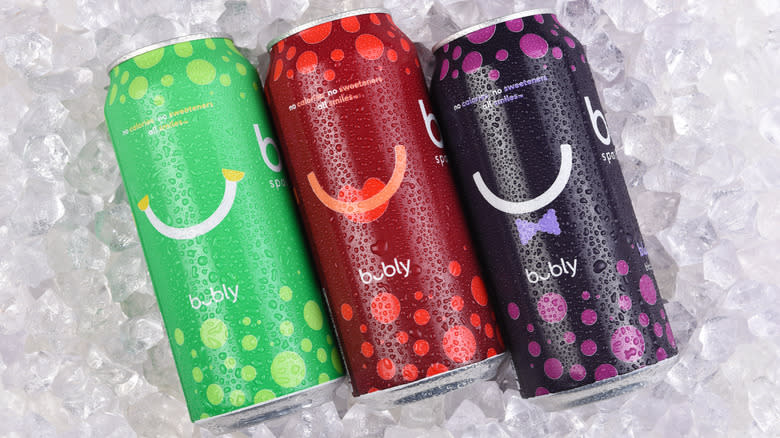
Bubly flavored waters span the colors of the rainbow, with natural flavors like mango, pineapple, and lime. But much like other seemingly healthy brands on this list, Bubly didn't pass the Consumer Reports PFAS test. Its blackberry sparkling water showed a score of 2.24 ppt. Although this figure is technically under the EPA's Maximum Contaminant Level of 4.0 ppt for drinking water, Consumer Reports notes that many experts wouldn't recommend consuming beverages above 1.0 ppt.
PFAS regulations seem to be getting stricter and stricter, and for good reason. The previous PFAS Maximum Contaminant Level sat at 70 ppt, significantly higher than today. But with evidence related to the harmful effects of PFAS mounting every day, we welcome this drastic change -- these stricter guidelines will help reduce our chances of suffering from a slew of side effects, ranging from cancer to fertility problems. The good news is that if you're a Bubly fan trying to avoid forever chemicals, you don't have to give up your precious flavors. In collaboration with Sodastream, the company also makes Bubly Drops. These fruit-flavored essences come in blackberry, mango, lime, and more, and can be added to any sparkling water at home.
Read the original article on The Daily Meal.


